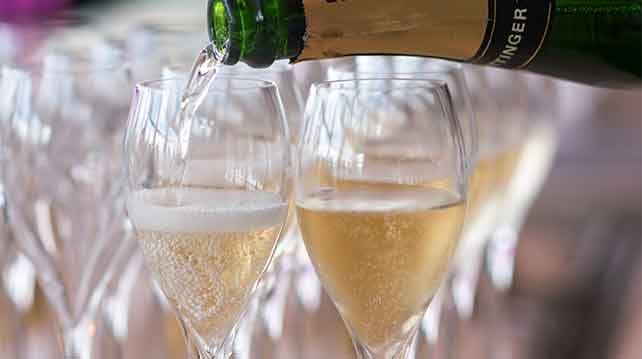Bubbly, Champagne, champers - whatever you call it, the sense of fun and celebration that comes with this liquid gold all begins when you hear that distinctive ‘pop’.
So when the opportunity arose for me to attend an “Evening with Taittinger Champagne”, I leapt at it, and even managed to learn a few things from the Champagne house’s Asia Pacific export manager, Nicolas Delion. Here are 5 surprising facts about this exquisite bubbly drink and how to consume it.
1. Champagne was created by monks
Benedictine Monks discovered Champagne in the 16th century. Early vintages of this golden liquid were dubbed “the devil’s wine” because the bottles tended to explode. However, over the years, improvements were made to both the bottle and the cork, and the standardization of this process was credited to a near-blind Benedictine monk, named Dom Pierre Perignon. Ring any bells?
2. Champagne caves exist!
There are hectares upon hectares of Champagne caves particularly in Reims, France. Historically, Champagne bottles were kept in caves due to their chilly temperatures, humidity control, and protection from sunlight plus natural vibrations needed for the maturation of this delicate beverage. Thus, keeping your Champagne in the perfect temperature is ideal!
3. Champagne CAN be kept in the fridge
Despite popular belief, Nicolas says it is OK for Champagne to be kept in the fridge, especially in humid climates like Malaysia - just don’t keep it there for too long! “If it’s too hot outside, there’s too much temperature variation, the natural cork would dry, shrink, and let the air in,” he says. “This will not happen in the fridge. So I don’t see the big issue. You know, people just want to give rules to everything!” he scoffs.
4. It’s all about the bubbles
You can gauge the quality of the Champagne by the size of the bubbles. To put it simply, the smaller the bubbles, the higher the quality of the Champagne. “The longer you age the Champagne, the tinier the bubbles would be,” said Nicolas. He also adds that to properly see the bubbles in your glass, it has to be pristine. Any impurities on the surface of the glass like dirt or scratches will create the illusion of extra fizziness.
5. Best glass to drink Champagne in?
The best glass to drink Champagne in is something between the flute and chardonnay glass. “The flutes narrow shape preserves the freshness of the bubbles, whilst a wider shape will help increase the perception of flavor and aroma, so something in between is the best,” he said.
